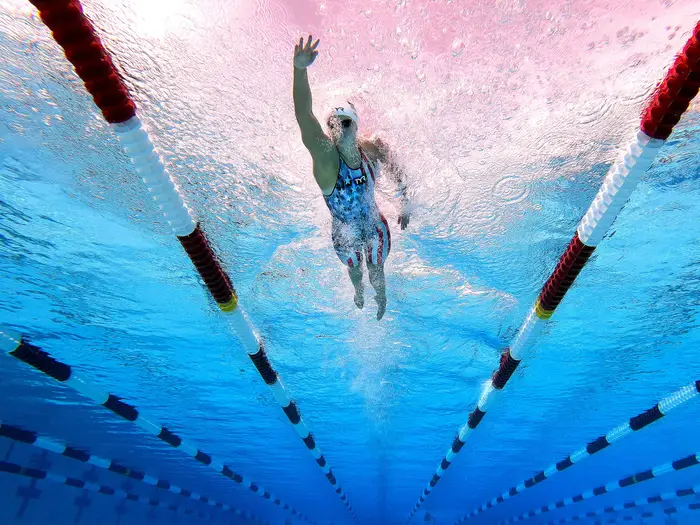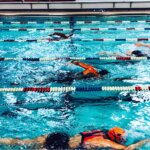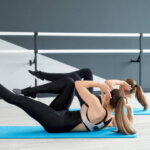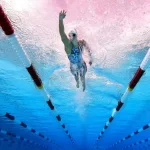For many triathletes, the swim is the weakest discipline. While getting one-on-one swim instruction is likely the best and fastest way to improve, not everyone has access to or a budget for a private swim coach. Adding drills to every swim workout you do is beneficial for not just improving your technique, but also to help keep you mindful of what you are actually doing in the water. Even the best swimmers will benefit from performing the following swim drills.
- Flick Drill – The flick drill helps ensure you are finishing each and every stroke. To do this drill, take a normal stroke, but then half way through the water, forcefully push your hand and arm out quickly and strongly making sure you fully extend your arm before exiting the water. If done correctly, you will feel like your arm is flailing out a bit as soon as it exits the water.
- Fingertip/Thumb drag – This drill helps with a high elbow recovery. While the high elbow recovery is not essential to a strong swim stroke, it does set the swimmer up for the proper pull underwater. To perform the fingertip drill, as soon as the arm exits the water, let the fingertips drag along the surface, pointing the elbow to the sky/ceiling while keeping it close to the body. Once the arm is all the way extended out in front, fingertips still touching the surface of the water, continue on with a normal stroke. For thumb drag, it’s very similar. Once exiting the water on the pull, the thumb touches the side of the body and is dragged all the way up to the armpit, then continue with the stroke. I personally like fingertip drill better than the thumb drag because the position of the thumb in the armpit is awkward and makes the stroke a little choppy.
- 3 Strokes/12 Kicks (also known as “The Zipper”) – This drill helps teach rotation. One of the toughest things to learn in the swim is to rotate properly. Every time you reach forward with a stroke, your body should turn to a 45 degree angle to the bottom of the pool. This drill is best done with a pair of Zoomers (short fins) on your feet. Like the name, take 3 strokes – hold that position with the leading arm stretched to the wall and keeping the body at a 45 degree angle to the bottom and take 12 kicks. Once the 12 kicks are completed, take 3 strokes, now you will be leading with the opposite arm. Keep that arm outstretched, body at a 45 degree angle to the bottom of the pool and take 12 more kicks. The most often question in this drill is “When do I breathe?” You can take a breath any time, but just a breath and then put the head back into the water and resume a normal swimming position.
- Fist drill – This drill is to help you get a feel for the water – with your forearm. Just like it sounds, you make your hands into fists and swim. It’s amazing how different it will feel by making this slight adjustment. By swimming with your fists, you will learn how your forearm is now doing the work in pulling all the water.
- Breath control – There are many different ways to add breath control sets to swim workouts. These drills help the swimmer learn how to remain calm in the event the swimmer wants to take a breath and cannot. Breath control also gives the swimmer added energy and expands the lung capacity. One example of a breath control set is to breathe every 5 strokes on one length and 7 strokes on the next.
- DPS (distance per stroke) – This drill is often overlooked and many times used incorrectly. Sometimes it is referred to as the “golf drill.” The idea behind this drill is to maximize every single stroke you take and taking the minimal amount of strokes you can to swim one length. However, the goal is to also maintain speed. Taking 3 strokes less per length while adding 5 seconds on to the time it takes to swim the length is not the ideal. This is why it is sometimes called the “golf drill.” The goal is to take the least amount of strokes while taking the least amount of time to swim the length. This drill forces the swimmer to be as efficient as possible.
These are just a few drills to incorporate, but the list can go on. If you are struggling with your swim or are already a good swimmer but just cannot seem to improve, contact me. I’d be happy to work with you on how you can be the best swimmer you can be.
Train Right, Tri Right!
Coach MJ







